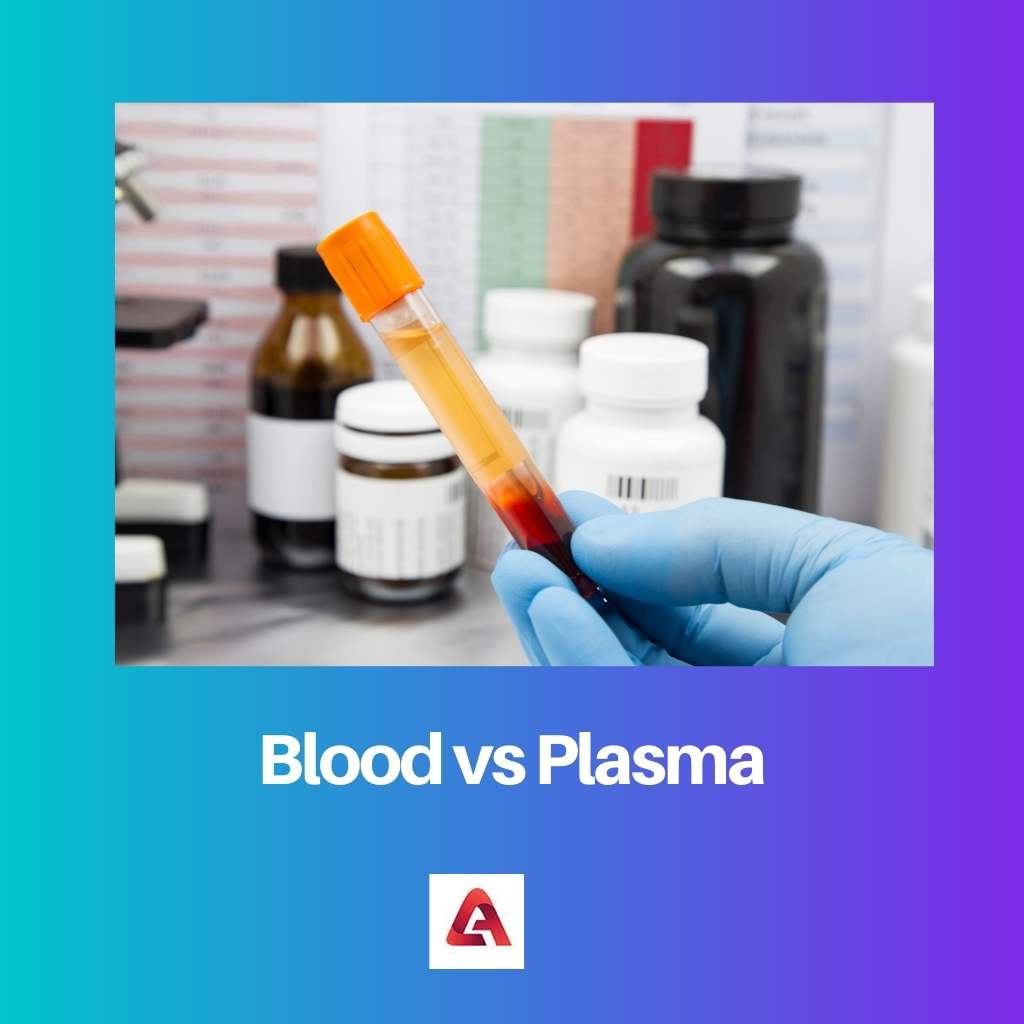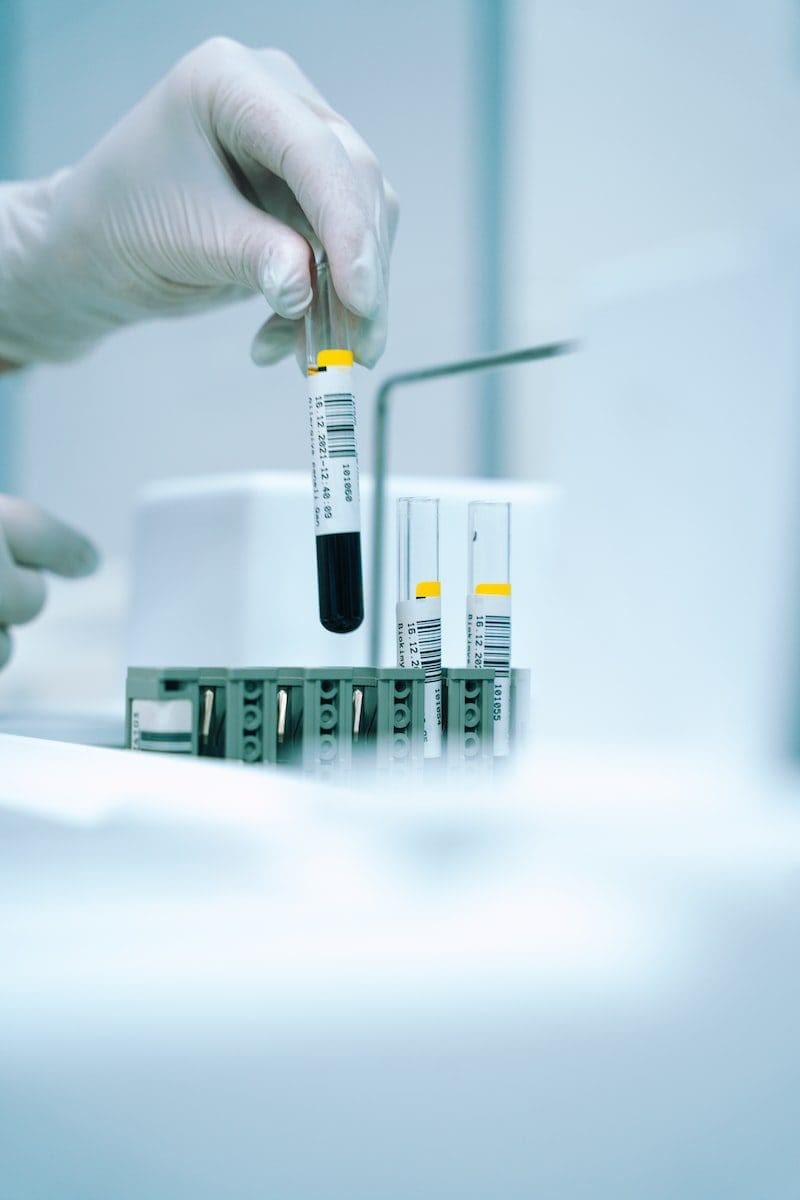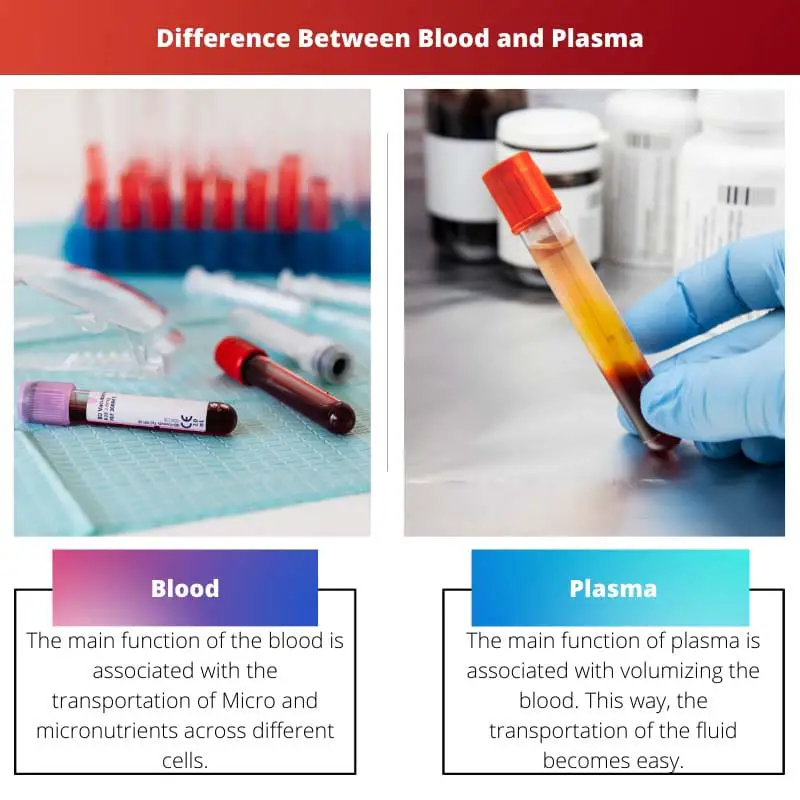Blood and plasma are two liquids of prime importance for the body. While blood is primarily responsible for transporting nutrients, plasma is a component of blood.
Key Takeaways
- Blood is a liquid connective tissue that circulates throughout the body, while plasma is the liquid part of the blood.
- Blood contains red blood cells, white blood cells, and platelets, while plasma contains water, salts, and proteins.
- Blood is used for transfusions, while plasma is used for treating blood clotting disorders and producing certain medications.
Blood vs Plasma
Blood is the body’s fluid connective tissue, while plasma is the blood’s liquid component. Blood contains RBC, WBC, Platelets, and Plasma. On the other hand, Plasma is made up of water, proteins, waste products, minerals, clotting factors, immunoglobulins, carbon dioxide and hormones.

Blood is the red fluid that oozes out of the body when a person gets injured. It is the liquid component of the human body and is made up of different types of cells.
Plasma can be referred to as the major component of blood. It forms up to 50% of the consistency of blood. It is made up of a combination of different salts and proteins.
Comparison Table
| Parameters of Comparison | Blood | Plasma |
|---|---|---|
| Color and consistency | Blood is red and the shade depends on the ratio between different components. | Plasma is yellow because it does not contain any color giving pigments. |
| The main function | The main function of the blood is associated with the transportation of Micro and micronutrients across different cells. | The main function of plasma is associated with volumizing the blood. This way, the transportation of the fluid becomes easy. |
| Constituents | Blood is made up of plasma, red blood cells, white blood cells, and platelets. | Plasma is made up of different salts and proteins. There is no cellular component in plasma as opposed to blood. |
| Compatibility | Blood transfusion requires a lot of tests to determine whether it will be compatible person’s body or not. | There are no incompatibility issues associated with plasma. This is the reason why it is preferred over blood for injuries. |
| Clotting | Blood clots with the help of platelets and can be seen as over minor and major injuries. | Plasma is transformed into serum after clotting. The serum is very beneficial in medical treatments and requires utmost care. |
What is Blood?
What happens when you get a minor or major cut on any part of your body? You see that a red-colored fluid oozes out from that spot.
Blood has different cellular components in it. The red blood cells are responsible for carrying oxygen to different cells of the body. They are red due to a pigment called haemoglobin.
The white blood cells are referred to as the saviours of the body. They help in preventing infections and fight disease-causing microorganisms.
The blood also has platelets that are responsible for the process of clotting. Clotting is very important to prevent excessive loss of blood after injuries.

What is Plasma?
Plasma is a major part of blood and provides it with a fluid form. This is because the other components are cellular and naturally solid. The liquid nature of the blood is a result of a major fraction of plasma in it.
Plasma is made up of proteins and salts. It is yellow and has more fluidity than blood. It accounts for more than 50% of the constitution of blood.
Patients who suffer from trauma and liver orders are given plasma therapy. One advantage of plasma is that it does not need compatibility tests.
Nowadays, a lot of people donate plasma so that they can help people in need. People with common blood groups are always in demand for donating plasma.

Main Differences Between Blood and Plasma
- Blood can be donated in its original form, while plasma needs to be separated from blood, called donation.
- A compatibility test needs to be done for blood transfusion. Plasma does not need a compatibility test.

- http://www.informatics.jax.org/greenbook/chapters/chapter17.shtml
- https://www.annualreviews.org/doi/pdf/10.1146/annurev.bi.19.070150.002205



